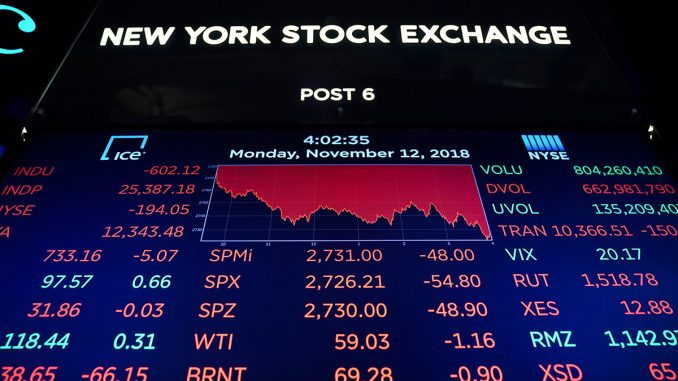
Hannah Lonergan, Staff Writer |
With COVID-19 cases still rising across the United States and businesses closing, the stock market saw a significant drop. A recent Gross Domestic Product (G.D.P.) report shows positive outlooks on the economy, but many stocks have contradicted these reports.
October is typically an above-average month for market volatility, in part from the psychological effect known as the “October Effect,” a perceived notion that the stock market tends to decline in October. Many significant stock market losses have occurred in October, including the “Black Monday” crash in 1987.
Financial recovery after losses in the first and second quarter this year is slowing due to slightly less new unemployment cases and not enough job production. According to The New York Times, this slowdown is also attributed to the fall of industrial production in September.
Without any federal stimulus or financial support for businesses, economic growth will be a difficult incline. Though the market is slowing but still growing, the growth is uneven and unequal along racial and gender divides. Unemployment has impacted Black and Hispanic women disproportionately since the pandemic started.
Spending on services in areas such as entertainment, restaurant outings and vacations have been down but spending on home lifestyle and automobiles have increased. According to The New York Times, American exports are also down 25 percent, far below pre-pandemic numbers.
After releasing the G.D.P. report for the third quarter of the year, showing signs of growth, many are concerned with the possibility of misleading numbers. The growth that was documented in the report with a rate of 33.1 percent from July to September shows a 7.4 percent growth from the previous quarter. But this growth can be attributed to unemployment compensation and loans given out to businesses. The fourth quarter has yet to see any boost to the economy in the form of stimulus.
The G.D.P. reports a broad measure of the economy, and according to the Guardian, “includes personal consumption, business investment, government spending and net exports.”
Economists are concerned with the next few months, in a post-election pandemic especially as winter falls on many businesses. In addition, the delays in COVID-19 vaccines and testing show a pessimistic outlook for the coming year. The fourth quarter may be grim, depending on the outcome of the election and if the federal government provides any assistance before the first quarter of 2021.
As October closes out, the month of volatility shined through as the Dow Jones Industrial Average took a sharp decline on Friday, Oct. 29. With Europe on a new month-long lockdown due to a rise in COVID-19 cases, the Dow dropped 157.51 points. Throughout the month, the Dow dropped almost six percent which is the biggest drop since the start of the effects of the pandemic in March. Nasdaq also did poorly on Friday, with Apple and Amazon taking heavy hits with their shares; it finished its day by dropping by 2.5 percent and totaling a decrease of 5.5 percent.
Although earlier in the week, the G.D.P. reports show growth for the economy, it seems to be a slow and steady one that has investors hesitant of the weeks and months moving forward.
Leave a Reply